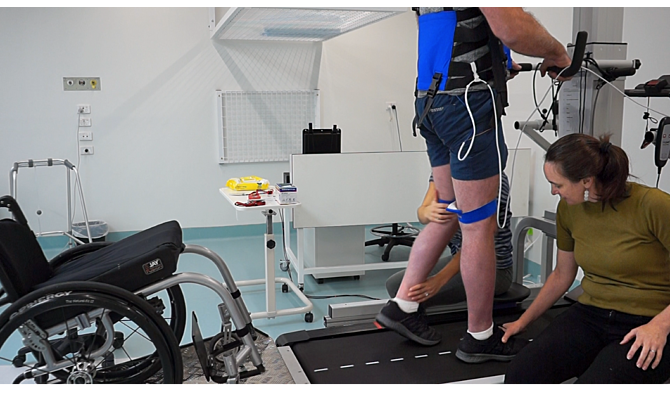Jump to
More than 20,000 people across Australia live with a spinal cord injury (SCI). An increasing number of studies in people with SCI indicate that spinal stimulation improves voluntary muscle control, blood pressure control, urinary tract function and bladder voiding as well as standing and walking.
After finishing recruitment for eWalk, our first trial established at the Spinal Cord Injury Research Centre, we have now started the community based eWalk2 trial. In this trial, we explore the effect of spinal stimulation combined with walking training on walking ability in people with chronic tetraplegia and paraplegia (C2-T11). Participants will receive spinal stimulation during 30-minute training sessions, 3 times a week for 12 weeks. Participants will be recruited in sites spread over Australia and New Zealand. In the eWalk2 trial the main outcome is improvement in walking ability. We also assess spasticity, strength, quality of life and independence as well as other subjective improvements.
Main inclusion criteria:
- Aged 16 years or older
- Diagnosed with a spinal cord injury, at least one year ago
- Able to take at least two steps with no harnessed body weight support. The steps may be completed with assistance, braces, gait aids or within parallel bars
- Have a small amount of voluntary movement in one or more leg muscles.
If you are interested in getting involved in the eWalk2 trial or would like more information email the spinal cord injury research team on email hidden; JavaScript is required
We have a voluntary database for people with SCI to volunteer in our trials, if you would like to join please click the button below to register.
Join our SCI volunteer database









